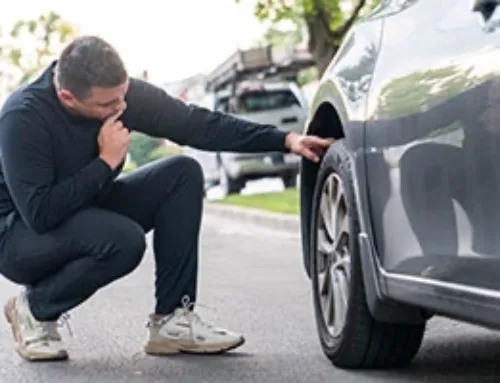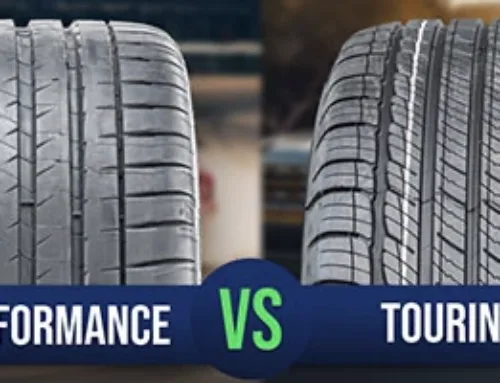Table of Contents
- How much does a tire rotation cost? The average price
- Why should you rotate your tires?
- How do tire rotations work?
- How often should I get my tires rotated?
- Tire rotation benefits
- Different types of tire rotations
- Other services involved
- Electric vehicle tire rotation and cost
- Can you rotate your own tires, and how?
- Frequently Asked Questions
Can you remember the last time you had your tires rotated? Now that you’re thinking about it, have you ever had a tire rotation? If it’s been a while, or even if you’ve never had a tire rotation, don’t panic. You’re not alone. A tire rotation is a simple procedure but one that many car owners often forget. So now that you’ve made up your mind to get your tires rotated soon, you’re probably wondering, “How much does a tire rotation cost?” Luckily, getting your tires rotated is one of the cheapest maintenance tasks you can do. Not only that, but it’s one of the fastest too.
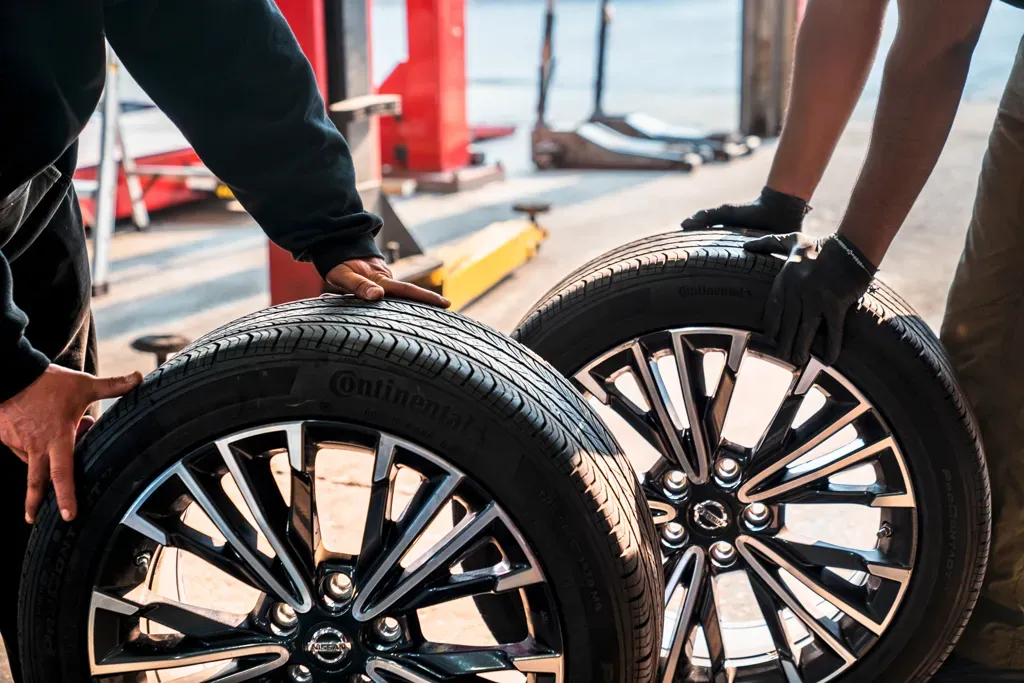
How much does a tire rotation cost? The average price
There are several factors that will affect your tire rotation cost: things such as the type of vehicle you drive, the size of your wheels, your car’s tires, any other services you choose to bundle together, and of course, the location of the auto care center.
All of that being said, for a standard automobile, you can expect your tire rotation costs to be somewhere between $20 and $60. For luxury cars, rotating tires might cost up to or even over $100. However, there are ways to reduce the cost of your basic tire rotation. Keep reading to find out.

Why should you rotate your tires?
Tire rotation is an important but often overlooked aspect of maintaining your car or vehicle. Over time, tires can experience uneven wear, which causes the need to replace them much sooner than they could actually serve.
For example, if you have a front-wheel drive vehicle, the front wheels will likely have significantly more wear than the rear wheels. The same, but opposite, is also true for rear-wheel drive vehicles. All-wheel drive vehicles also have a specific wear pattern which we will discuss more later on. Regular tire rotations are an excellent way to avoid that, extending your tire life.
How do tire rotations work?

Basically, a tire rotation is just switching the location of each tire to try and even out any differences in unevenly worn tires. Try this analogy to understand: I tend to drag my right heel a little bit when I walk, leading to excessive wear on the right heel of my shoe. Without fail, it is my right shoe that falls to pieces first every time, spurring me to buy a new pair of shoes.
Now imagine if I could somehow switch my left and right shoes to give the right shoe a break and wear down the heel of the left (now my right) shoe. I’ve effectively doubled the life of my shoes.
How often should I get my tires rotated?

The advice on this is fairly varied; some say every 5,000 miles, and others say every six months… While some factors will affect how often you should get a tire rotation, such as the driving you do and the weather and conditions in your area, an easy-to-remember rule of thumb is to rotate your car’s tires every other oil change.
If you change your oil regularly at 3,000-mile intervals, then this would mean that every 5,000-6,000 miles, you will get your tires rotated. Just don’t forget to change your oil and ask your technician to rotate your tires while they’re at it.
Tire rotation benefits
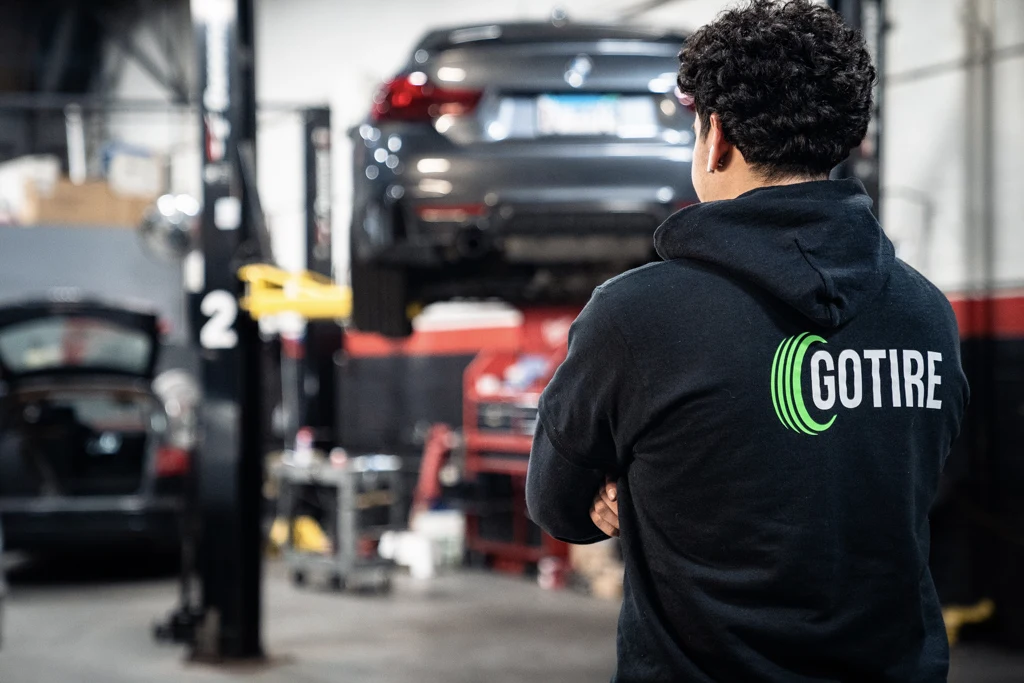
It’s in your best interest to get a tire rotation. A set of new tires is expensive, and a tire rotation is fairly cheap in comparison. More frequent tire rotations will:
- Extend the life of all of your tires, saving you money in the long run
- Even out any excessive tread wear that a specific tire or tires might have
- Improve the handling and safety of your vehicle by maintaining the tire treads
- Increase the fuel efficiency of your vehicle
- Give you a sense of superiority over other car owners in the neighborhood that have neglected this most basic service
Different types of tire rotations
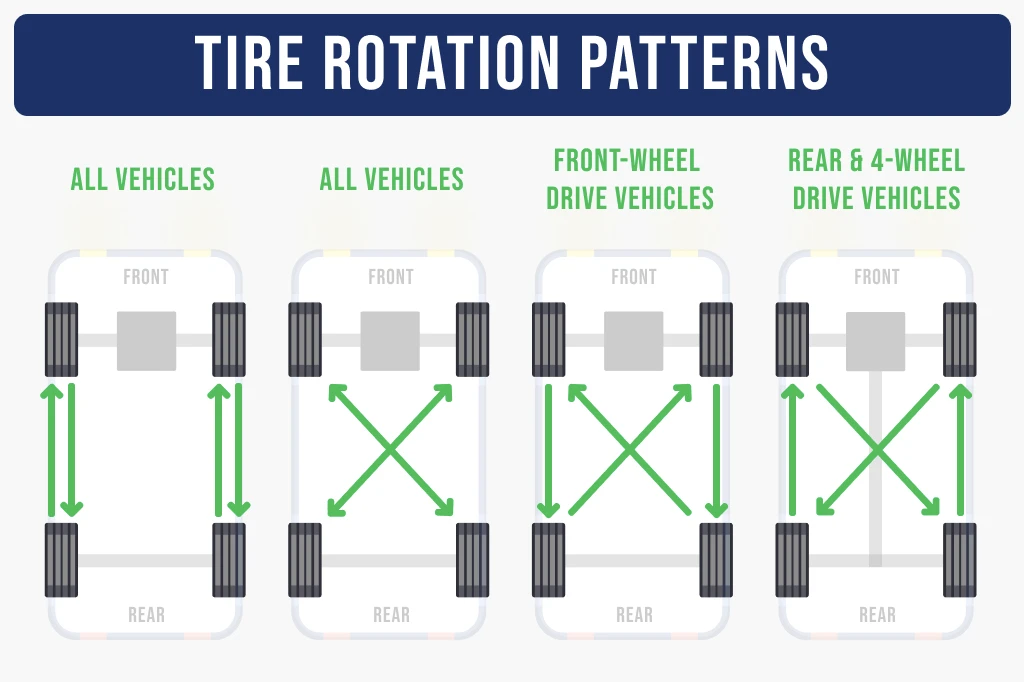
There are many different types of tire rotation services that you can get depending on the type of vehicle you drive, the type of tires that you have, and whether you have a rear-wheel drive, front-wheel drive, or all-wheel drive vehicle. Read on to see which tire rotation pattern is right for you.
Front-wheel drive tire rotation
Front-wheel drive, or FWD, cars are vehicles where all of the power is sent to the front wheels. This causes the front tires to wear out faster than the rear wheels. Typically, technicians will rotate tires in what is called a “forward cross”, where the front tires go straight to the back, and the rear tires will cross as they move to the front. So, in this case, the left rear tire will end up on the front right side of the car.
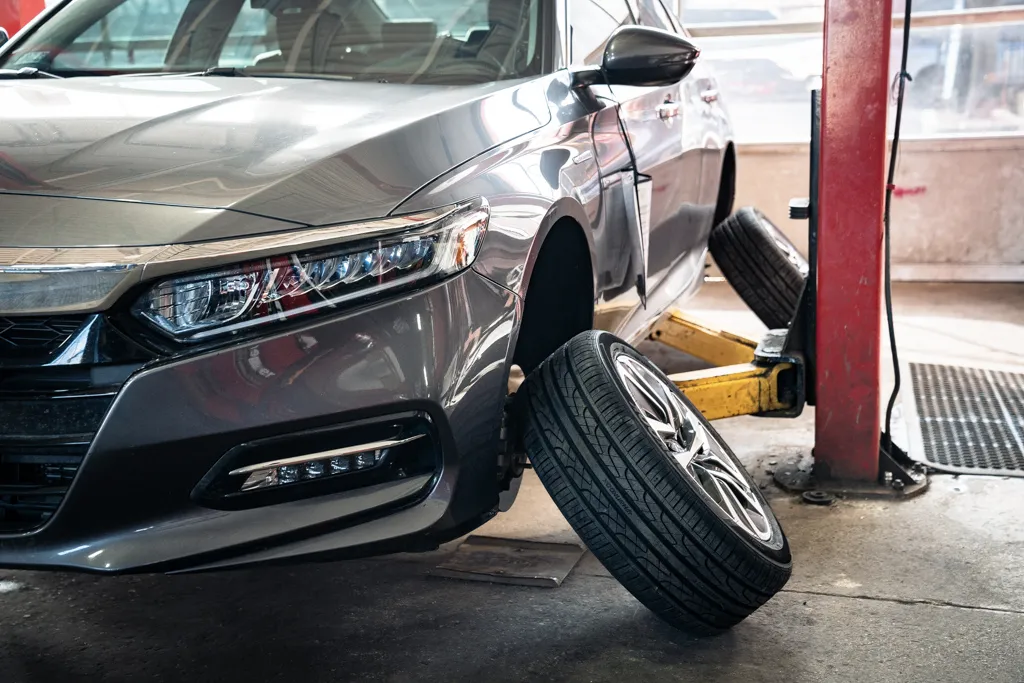
Don’t let the best tire deals & tips roll by!
Sign up for our newsletter
Rear-wheel drive tire rotation
One of the tire rotation patterns commonly used for rear-wheel drive vehicles is the rearward cross. This is just like the forward cross but the opposite; the rear tires become the front wheels, and the front tires cross as they move to the back wheels.
All-wheel or four-wheel drive tire rotation
An AWD vehicle (also known as a four-wheel drive vehicle) is a car that provides equal power to all four tires while driving. Many cars these days are AWD vehicles, especially SUVs and trucks. These vehicles usually get the standard rearward cross or sometimes the X-pattern. The X pattern is just swapping in an X shape so that the left front tire gets swapped for the right rear tire and vice versa.
Other services involved
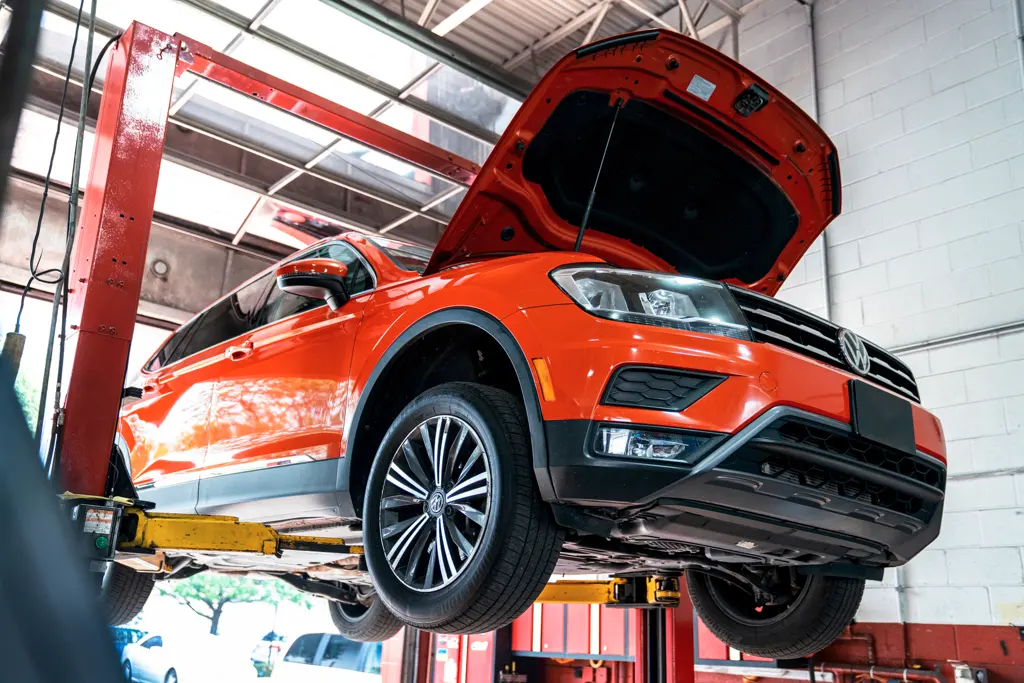
Many car owners choose to get several services performed together when getting their tires rotated. Some common services bundled together are:
- Oil change: As mentioned before, getting your tires rotated every other oil change is a convenient and easy way to make this a regular maintenance task
- Tire balancing: Over time, your tires will become worn down, which will affect the weight on the inside or outside of your tire. When a tire’s weight is unbalanced, it can cause excessive vibrations when driving at high speeds. Technicians will add a small weight to the tire to balance it.
- Tire alignment: A tire alignment is sort of the next logical step in a tire rotation. A tire alignment is a bit different in that each wheel is properly re-aligned so that it is straight and flat
- Brake inspection: It’s easier to inspect the brakes once the wheels have been taken off. A technician might even notice that your brake pads need to be replaced just by glancing at them once the wheel has been removed
Electric vehicle tire rotation and cost

One of the downsides to owning an electric vehicle is that they tend to wear down tires much sooner than gas-powered vehicles. This is for two main reasons:
- Electric vehicles tend to be heavier than gas-powered vehicles, adding more wear and tear to the tires.
- Electric vehicle engines apply much more torque to the tires, increasing friction and wear.
If you own an electric vehicle (EV), it is important that you equip it with special electric vehicle tires. These are made specifically to handle the increased weight and torque of an EV. If you use standard tires on your EV, expect them to wear down much faster than they would on a gas-powered car.
You should rotate your tires on an EV more frequently, up to every 3,000 miles. The cost is generally higher than for standard vehicles as well, costing as much as $100. For higher-end Evs such as a Tesla, the cost can be around $150.
Can you rotate your own tires, and how?
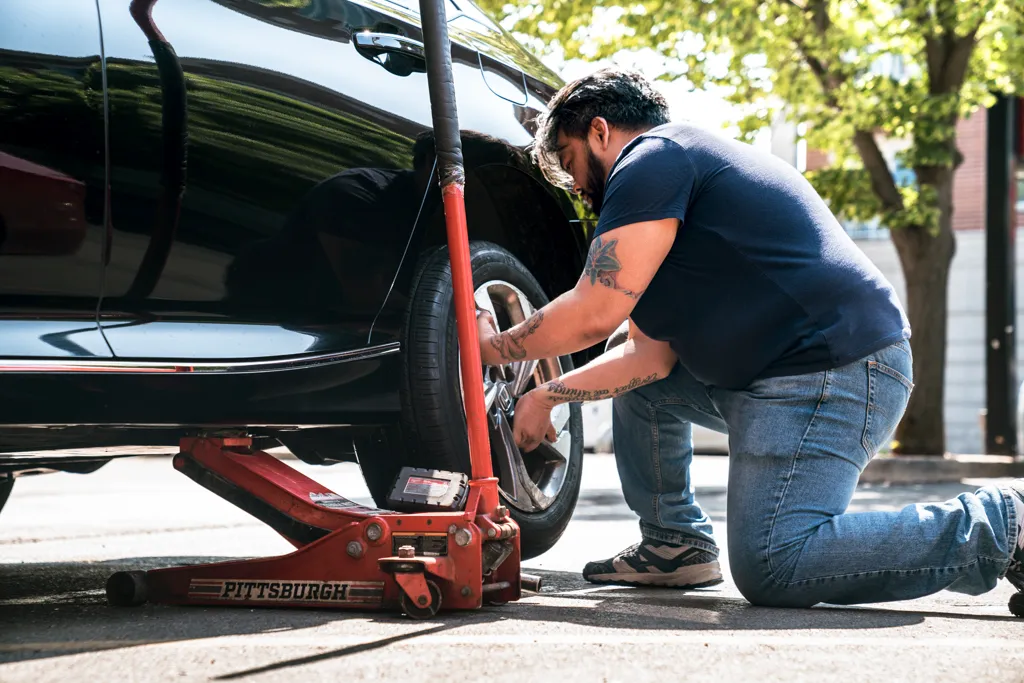
Assuming you have the tools and the know-how to change a tire, then you should be able to rotate your own tires for free. Use the jack to raise one wheel off the ground, use the tire iron to loosen the lug nuts, and then remove the wheel.
At this point, it’s best to let the weight of the car rest on a jack stand while you move to a new tire. However, you can put the spare tire on as a placeholder if you don’t have a jack stand.
Then, continue the process until you arrive back at the spare tire and all four tires have been rotated. It’s important to note that if you choose to do this at home, you won’t have the benefit of tire balancing or any other service you wish to bundle together with your tire rotation.
Most people rotate tires at an auto body shop because doing it yourself takes time and energy.
Frequently Asked Questions
Do spare tires need to be rotated?
Yes and no. If your vehicle comes equipped with a “donut” or temporary spare tire, then no, you should not have this tire go through the rotation with the rest of your “regular” tires. However, if your vehicle comes equipped with a full-sized spare, as most vehicles these days do, then yes, your technician might recommend a 5-tire rotation where the spare comes out, and a different tire goes into hibernation.
How long do tires typically last?
This answer highly depends on the tire manufacturer, the type of tire, and the conditions you typically drive in. However, for most people with standard all-season tires, you can expect them to last 50,000 miles or more.
How much does a new set of tires cost?
Usually, you will have to buy new tires in sets of two or four. The cost depends highly on the type of tire you buy (all-season, winter, performance, all-terrain, etc.) and the manufacturer. Assuming you are buying standard all-season tires, then expect the cost to be about $100-150 per tire on the lower end, which prices going as high as $300-500 per tire on the higher end.
Is Walmart a good location to get your tires rotated?
Walmart has an excellent tire rotation service at a very low cost. According to Walmart’s Auto Care Center website, a tire rotation costs $5 per tire, totaling a measly $20. This is at or below standard prices and is definitely what we would call “a good deal”.
However, the deal gets sweeter as Walmart offers a $14 per tire lifetime balance and rotation package. Lifetime, in this case, refers to the lifetime of the tire, which considering that a good pair of tires can last for up to 50,000 miles or more, you’re looking at a great deal for just $56.
Where Can I Get My Tires Rotated?
You can get a basic tire rotation at almost any tire shop or auto care center. It’s a simple job that only requires basic tools, so there should be no shortage of garages that can help you out. Some common locations to get a quality tire rotation done are:
- Walmart
- Jiffy Lube
- Costco
- Firestone
- Other reputable tire shops.





